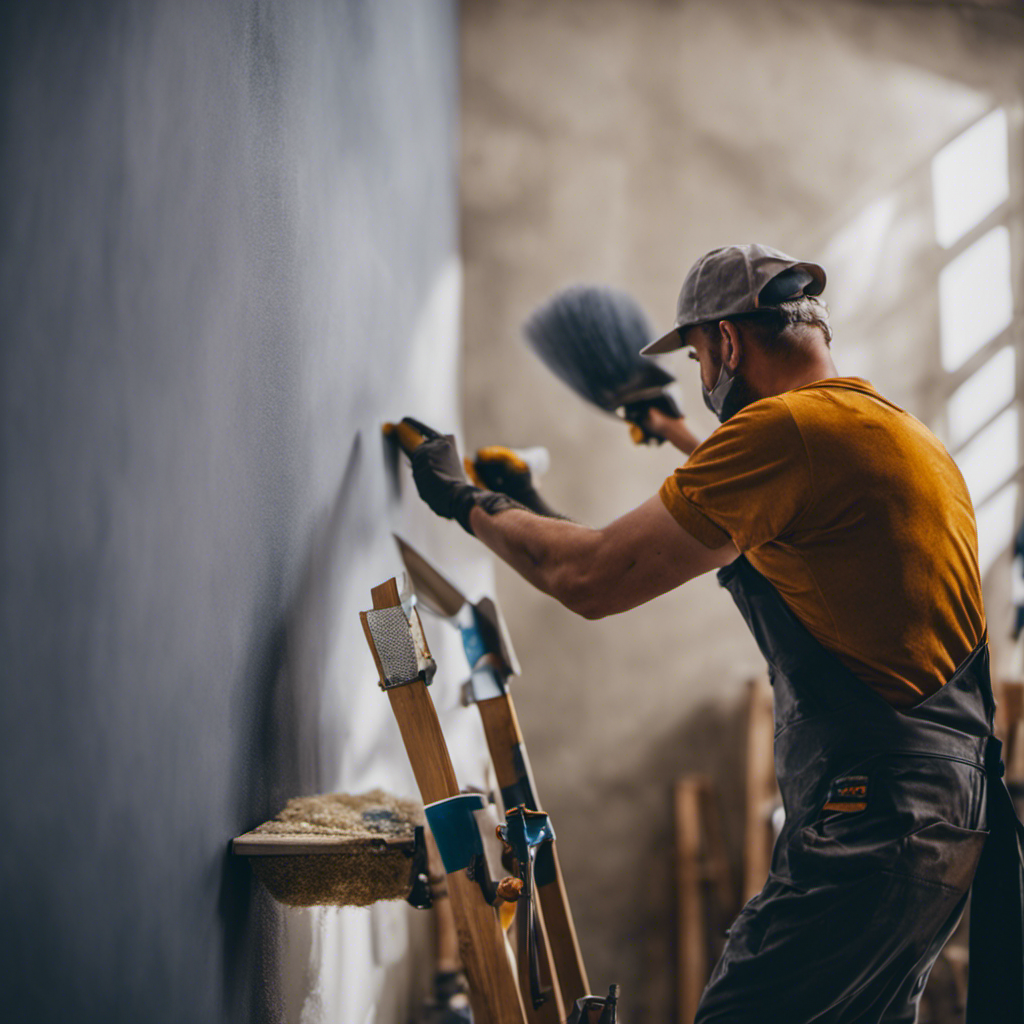Phone:
(701)814-6992
Physical address:
6296 Donnelly Plaza
Ratkeville, Bahamas.
40 Years still going strong
40 Years still going strong

Are you looking to achieve a flawless painting finish on your walls in York? Look no further!
In this article, we will reveal efficient surface prep secrets that will help you achieve professional-grade results.
From the importance of proper preparation to essential tools and materials, we’ve got you covered.
Follow our step-by-step guide and learn how to avoid common mistakes.
Get ready to transform your walls into a work of art!
Proper surface preparation is crucial for achieving flawless painting results. When it comes to painting, taking the time to prepare the surface properly can make a world of difference.
Hiring professional surface preparation services offers several benefits. Firstly, professionals have the knowledge and expertise to assess the condition of surfaces accurately. They can identify any underlying issues that may affect the longevity of the paint job.
Secondly, professionals have access to specialized tools and techniques that can ensure the surface is clean, smooth, and ready for painting. They can remove any dirt, grime, or old paint effectively, resulting in a better adhesion of the new paint.
To achieve flawless surface preparation, you’ll need essential tools and materials. The right equipment and supplies are crucial for effective surface prep techniques and following best practices for surface preparation. Here are some essential tools and materials you should have on hand:
Start by gathering all the necessary tools and materials. Then, begin by cleaning the surface using soap, water, and a sponge or brush.
Once the surface is clean, inspect it for any imperfections such as cracks, holes, or peeling paint. Use a putty knife to fill in any cracks or holes with spackle or joint compound, and sand down any rough areas.
Next, apply a primer coat to ensure better adhesion and a smoother finish. Allow the primer to dry completely before moving on to the final step, which is applying the paint.
Use a brush or roller to apply the paint evenly and in thin coats, allowing each coat to dry before applying the next. Remember to clean your tools properly after each use.
By following these surface prep techniques and conducting a thorough pre-painting surface inspection, you can ensure a flawless and long-lasting paint job.
Now, let’s move on to the next section where we’ll discuss common surface prep mistakes to avoid.
Don’t overlook the importance of properly preparing your surfaces for painting by avoiding common mistakes such as rushing through the cleaning and sanding process. Taking the time to prepare your surfaces correctly will ensure a flawless and long-lasting paint job. Here are three surface preparation tips to help you avoid errors:
For a flawless painting finish in York, expert tips include selecting the right paint type and using high-quality brushes and rollers. Achieving smooth surfaces is essential for a flawless finish.
Before painting, it’s important to prepare challenging surfaces properly. Start by cleaning the surface to remove any dirt, grease, or loose paint. Repair any cracks or holes with filler and sand them smooth.
For surfaces with existing paint, it’s crucial to remove any loose or peeling paint before applying a new coat. Use sandpaper or a scraper to gently remove the old paint, ensuring a clean and even surface. Additionally, consider using a primer to improve adhesion and create a smooth base for the paint.
Following these expert tips will help you achieve a flawless painting finish in York.
Surface preparation time before starting a painting project varies depending on the condition of the surface. However, it is vital to allocate sufficient time for this step as it ensures a flawless finish and enhances the longevity of your paint job.
You can’t skip surface preparation even with high-quality paint. Surface preparation is important because it ensures better adhesion, a smoother finish, and longer-lasting results. Proper surface prep is essential for a flawless painting project.
You can try chemical stripping or power washing as alternative methods for surface preparation besides sanding. They can help remove old paint or debris efficiently, ensuring a flawless painting outcome.
When preparing surfaces for painting, it’s important to take specific safety precautions. Ensure proper ventilation to prevent inhalation of harmful fumes. Protect your eyes, skin, and lungs by wearing safety goggles, gloves, and a mask.
No, you don’t need to remove all existing paint before starting the surface preparation process. There are alternative methods like sanding and priming. However, make sure to follow safety precautions to avoid any risks.